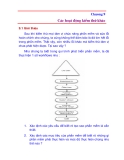
Improvements of Directed Automated Random Testing
in Test Data Generation for C++ Projects
Duc-Anh Nguyen
*
, Tran Nguyen Huong
†
, Hieu Vo Dinh
‡
and Pham Ngoc Hung
§
VNU University of Engineering and Technology
Hanoi, Vietnam
*
nguyenducanh@vnu.edu.vn
†
17028005@vnu.edu.vn
‡
hieuvd@vnu.edu.vn
§
hungpn@vnu.edu.vn
Received 21 July 2018
Revised 26 August 2018
Accepted 8 February 2019
This paper improves the breadth-¯rst search strategy in directed automated random testing
(DART) to generate a fewer number of test data while gaining higher branch coverage, namely
Static DART or SDART for short. In addition, the paper extends the test data compilation
mechanism in DART, which currently only supports the projects written in C, to generate test
data for C++ projects. The main idea of SDART is when it is less likely to increase code
coverage with the current path selection strategies, the static test data generation will be
applied with the expectation that more branches are covered earlier. Furthermore, in order to
extend the test data compilation of DART for C++ context, the paper suggests a general test
driver technique for C++ which supports various types of parameters including basic types,
arrays, pointers, and derived types. Currently, an experimental tool has been implemented
based on the proposal in order to demonstrate its e±cacy in practice. The results have shown
that SDART achieves higher branch coverage with a fewer number of test data in comparison
with that of DART in practice.
Keywords: Directed automated random testing; concolic testing; test data compilation; test
data generation; control °ow graph; C++; SMT-Solver.
1. Introduction
Unit testing has been considered an important phase to ensure the high quality of
software, especially for the system software written in C++ due to the painstaking
requirements of quality. Two well-known approaches for unit testing are black-box
testing and white-box testing [22]. Black-box testing only focuses on the correctness
of input and output without considerations about its source code. In contrast,
§
Corresponding author.
International Journal of Software Engineering
and Knowledge Engineering
Vol. 29, No. 9 (2019) 1279–1312
#
.
cWorld Scienti¯c Publishing Company
DOI: 10.1142/S0218194019500402
1279

white-box testing tries to inspect the quality of source code by analyzing it. This
approach allows detecting potential errors in software that cannot be found by black-
box testing. However, the cost for evaluating the quality of software is quite ex-
pensive, especially in large-scale software. The need for automated unit testing is
becoming more and more urgent and unavoidable to reduce the budget of the testing
phase. Up to the present, there are two major directions of automated test data
generation known as static testing and dynamic symbolic execution (DSE) [3]. The
idea of the former is to generate test data automatically by applying source code
analysis techniques. Although this direction seems to be e®ective, it faces several
issues in practice. The main reason is that the source code analysis requires a large
amount of e®ort to deal with various syntaxes such as API usage, lambda, etc. The
latter can be divided into two major methods including execution generated testing
(EGT) and concolic testing. EGT aims to detect possible potential bugs in C++
projects by executing it symbolically in up to thousands of separate forks [5,6,14]. In
contrast, concolic testing, which is ¯rst implemented in directed automated random
testing (DART) [10], aims to produce a series of test data maximizing a speci¯c code
coverage criterion with the least number of test data.
In DART, given a function under test, initial test data are generated randomly
based on the type of passing variables. These initial test data are then passed into
an instrumented program to execute it on the runtime environment. During this
test data execution, DART collects path constraints, denoted by PC,ateachde-
cision until the testing program raises an error or terminates. In the ¯rst case, a bug
is reported and DART starts generating another test data randomly again. Oth-
erwise, DART negates the current path constraints PC in the way that the solution
of the negated path constraints tends to visit the unvisited branches when exe-
cuting it on the testing function. Although DART demonstrates its e®ectiveness in
practice, this method still remains an issue related to the number of test data.
In addition, DART currently provides a fast test data compilation mechanism
to reduce the computational cost of test data generation, but only supports
C projects.
Regarding the number of test data in concolic testing, it should be minimized to
facilitate the testing management process with the smaller number of iterations. In
order to achieve this objective, DART tries to lower the number of iterations as
many as possible. Generally, the process of the next test data generation in DART
includes four main steps: (i) generating path constraints from the current test path,
(ii) negating these path constraints PC to get :PC, (iii) generating the next test data
by solving :PC, and (iv) executing the next test data to get the next test path. The
solution to reduce the number of iterations depends mainly on step ii, where a
constraint in PC is negated to generate the next test data so as to go through
unvisited branches. However, in fact, the negated path constraints :PC could
not ensure completely that its solution will pass through unvisited branches due
to several reasons. One main reason is that there might exist many candidate
constraints to negate based on the selected path selection strategy [9–11,13]
1280 D.-A. Nguyen et al.

(e.g. breadth-¯rst search (BFS), depth-¯rst search (DFS), etc.) and how to choose
the best one is still a challenging problem. In the worst case, it might take a large
number of iterations to achieve high code coverage due to the selected strategies.
Another reason is related to the capacity of symbolic execution. Speci¯cally, given a
test path, a set of path constraints will be generated by applying symbolic execution
[2,3]. Each path constraint in this set is corresponding to a condition on the given
test path. These path constraints are then negated and solved to obtain the next test
data [8,11,17–19]. However, in the case where the implementation of SE does not
support enough cases (e.g. pointers, two-dimensional arrays), the next test data will
not go through the new visited branches as expected. As a result, the computational
cost of test data generation might increase signi¯cantly.
Currently, the test data compilation suggested in DART only applies to basic
types, pointer, struct, and array in C projects. Therefore, when generating test data
for C++ projects, this compilation mechanism needs to be improved to reduce the
computational cost of test data generation. According to DART, when new test
data are discovered, then they are executed on runtime environment to collect
visited instructions by a general test driver. The main idea of the test data com-
pilation in DART is to store the generated test data in a unique external ¯le, and
then a test driver analyzes this ¯le to load the values of test data when executing.
One big advantage of this strategy is that the general test driver only needs to
compileoncetocreateanexecutable¯le.Because of one-time compilation, the total
computational cost of test data compilation, in particular, and test data generation
in general are reduced signi¯cantly, especially in the projects having a large number
of test data.
Therefore, this paper proposes two techniques to deal with the mentioned lim-
itations. First, in order to reduce the number of test data, the paper improves the
BFS strategy proposed in DART by combining this strategy with a static test data
generation strategy, namely Static DART, or SDART for short. Speci¯cally, when it
is less likely to increase code coverage with the current path selection strategy, the
static test data generation strategy will be selected instead. In this static analysis
strategy, SDART will generate a list of partial test paths which go through unvisited
branches, then try to generate test data traversing these partial test paths. In other
words, by combining the existing path selection strategies with the static test data
generation strategy, SDART expects that more newly visited branches will be
detected earlier than keeping the current strategies. Second, the paper extends the
idea of the test data compilation for C projects to deal with C++ projects by using a
C++ general test driver. In essence, the idea of the general C++ test driver is similar
to the test driver used in the test data compilation proposed in DART. However, the
C++ general test driver is presented in a more general representation by using
templates. By using templates, the C++ general test driver is more °exible and
expandable to support various data types.
The structure of the paper is organized as follows. Several outstanding
related works are discussed in detail in Sec. 2to provide the overview of the test
Improvements of DART in Test Data Generation 1281

data generation. Section 3presents the background of DART. After that, Sec. 4
provides the overview of the proposed method and the description of source code
preprocessing phase. Next, the details of the second phase called test data generation
are described in Sec. 5. Section 6shows an implemented tool named ICFT4Cpp
based on the proposed method to demonstrate its e®ectiveness in practice. Finally,
the conclusion of the paper is given in Sec. 7.
2. Related Works
Many works have been proposed for enhancing test data generation phase by several
research groups. Focus on the most outstanding works only, there are seven e®ective
improvements of test data generation for C/C++ projects including test data
compilation [10,13], compositional testing [21], symbolic execution [8,11,17–19],
constraints optimization [6,8,11,14,15], parallel SMT-Solvers [16], path selection
strategies [8–11,13], and initial test data generation [23].
Godefroid et al. extended DART for the purpose of compositional testing by in-
troducing an algorithm, namely SMART (Systematic Modular Automated Random
Testing)[
21]. SMART tests functions in isolation, then encoding test results as
function summaries expressed using input preconditions and output post-conditions.
After that, these summaries are used for testing higher-level functions. Currently,
our method does not focus on testing compositional functions.
The computational cost of test data generation can be reduced signi¯cantly in the
test data compilation step. Both DART [10] and CREST [13] applied the same
technique to accelerate the test data compilation step. CREST is known as an open-
source prototype test generation tool for C. The main idea is that all of the generated
test data are stored in an external ¯le, and a unique test driver reads this ¯le to
collect the values during execution. It means that the compilation process of general
test driver takes place once for all of the produced test data. However, CREST
proposal is only applied for basic types rather than for derived types which are
used widely on C++ projects. In addition, the method proposed in DART limits on
C projects. Therefore, our proposed method is developed based on the original idea
of CREST and DART to deal with not only basic types but also derived types
(i.e. class,struct) on C++ projects.
Because the constraints generated from a test path may be complicated and
lengthy, SMT-Solvers may take a long time to solve these constraints. To reduce the
cost of solving these constraints, these constraints will be optimized before passing
into SMT-Solvers. There are three main types of constraints optimization. The ¯rst
optimization named incremental solving technique is used in CUTE [11], EXE [14],
KLEE [6], and CAUT [8]. The main idea is that only the constraints related to
the last negated condition are solved rather than all of the original constraints.
The second optimization, which is called cache-based unsatis¯ability check,is
implemented in EXE [14] and KLEE [6]. In this optimization, all of the previous
constraints are cached for the next solving constraints. A subset of constraints
1282 D.-A. Nguyen et al.

having no solution means that the current constraints are unsatis¯able. Otherwise,
the current constraints may have a solution if there exists a subset of constraints
having a solution. Third, the constraint optimization in CUTE [11] and CAUT
[8,12] tries to check whether the last condition is a negation of any previous
constraints. If it is, SMT-solvers do not solve these constraints because it is always
impossible. Another constraint optimization removes evident subconstraints from
the original constraints so as to reduce the complexity of these constraints [6,11].
Recently, in [15], Cadar et al. proposed a new constraint optimization for array case.
Their paper introduced three transformations called index-based transformation,
value-based transformation, and interplay of transformations to decrease the com-
plexity of array constraints.
Another strategy to improve the computational cost of test data generation is to
combine several SMT-Solvers such as Z3 [4], SMT-Interpol, STP [6,14], etc. In fact,
each of SMT-Solvers only deals e®ectively with some types of constraints. In [16],
Cadar et al. proposed some ideas of SMT-Solvers combination for ¯nding a solution
as fast as possible called parallel portfolio solver. Speci¯cally, their portfolio solver
can be deployed at di®erent levels of granularity. In the simplest option called
program level, multiple variants of symbolic execution are run at the same. Each
variant uses a distinct SMT-Solver to solve constraints. In the second option, the test
data generation process is performed in a unique machine, but at query level. Given a
query, the machine detects the most suitable SMT-Solver for the current query
because di®erent SMT-Solvers may perform better on di®erent queries. Another idea
is that instead of using di®erent SMT-Solvers, the machine performs with di®erent
versions of a unique SMT-Solver.
Several path strategies have been proposed to reduce the number of test data
while trying to maximize the code coverage in concolic testing. Initially, DART [10]
proposed DFS strategy negating the last condition to ¯nd the next test data. This
strategy actually increases code coverage; however, it may lead to the run-forever
problem, especially in the functions containing loops. Later, the run-forever problem
can be solved by adding the number of limit iterations for loops in PathCrawler [9]
and CUTE [11]. CREST [13] uses the Dijkstra algorithm to ¯nd the shortest path
from the visited statements/branches to the unvisited instructions. Rather than
using Dijkstra algorithm, CAUT [8,12] tries to ¯nd the best path from visited
instructions to the uncovered block of instructions.
Nguyen et al. suggested that the initial test data should be generated by static
analysis due to the problem of random test data generation [23]. The idea is to
construct a control °ow graph, then generate initial test data based on this graph by
using the symbolic execution. Because the constraints between variables are detected
during static analysis, the probability of runtime error executions caused by the
initial test data tends to reduce in comparison with that of the random technique.
For example, by using static analysis, a pointer must be always allocated in memory.
Therefore, the value of this pointer in the initial test data should not be assigned
to NULL.
Improvements of DART in Test Data Generation 1283









![Các loại kiểm thử phần mềm [Năm hiện tại]](https://cdn.tailieu.vn/images/document/thumbnail/2013/20131130/chuonghtp/135x160/5161385783054.jpg)






![Tài liệu ôn tập môn Lập trình web 1 [mới nhất/chuẩn nhất]](https://cdn.tailieu.vn/images/document/thumbnail/2025/20251208/hongqua8@gmail.com/135x160/8251765185573.jpg)









